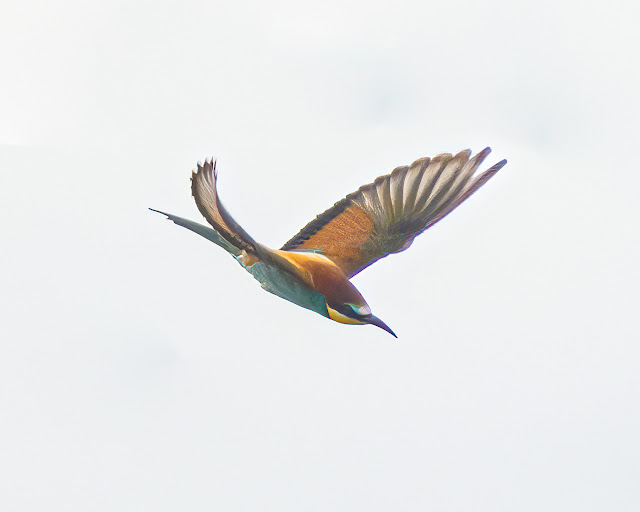As I was due to be on dog walking duty I got up at silly o’clock, walked the dogs and was gone by 06:00. The drive across to the east coast normally takes around three and a half hours plus any stops but the drive yesterday was truly horrendous. I soon hit the early Monday morning traffic on the M42 road works. While the helpful overhead information signs indicated a 10 minute delay it was actually 45 minutes. Have you ever wondered how it can take 15 months to replace a section of safety barrier? Apparently it’s all done by a chap called Burt who only works every other Wednesday afternoon. If you have bored children in your car play spot the workman with each sighting worth one point. My personal best is 3 and, in case you wondered, someone in high vis chatting to their mum on their mobile doesn’t count!
I was delayed by a further hour by a vehicle fire on the M6 and eventually arrived at the Cley beach car park just after 11:00. I parted company with the princely sum of £3 to park and made my way along the shingle beach to the reported viewing location, a screen overlooking a promising looking scrape. The Plover was feeding actively in the wet sand and the anguish of past dips was soon a distant memory.
Three species of Golden Plover are recognised on the UK bird list. The European Golden Plover is a comparatively common wader in the UK, particularly in the winter when they form large flocks on lowland fields and pastures. The term wader here is a bit of a misnomer as it is rarely seen wading preferring drier ground. Their main breeding ground is the artic tundra from Iceland across to central Siberia. The slightly smaller Lesser Golden Plover is now split into two distinct species. The American Golden Plover, afforded a one star rarity status in the Colins birding bible, breeds in North America while the Pacific Golden Plover, a two star rarity, breeds in northern Siberia and western Alaska. Having seen the Pacific Golden Plover previously I have now seen all three species.
The gold in the name relates to the gold speckling on the back, crown, and wing. This is offset by varying amounts of black speckling on the three species producing a most attractive looking bird. The smaller American and Pacific species are quite similar differing only on the extent of black on the ear, coverts, throat, breast and belly.
I watched the Plover going about its business feeding in the soft mud unaware of its admirers behind the screen. A Lapwing took an occasional exception to the Yankee visitor moving it around the scape but in never moved more than 10 or 20 meters. I’m always at my most relaxed in these situations of mother nature therapy. I was brought up in a very small village in Wiltshire with an idyllic childhood spent outside whenever possible up to all sorts of mischief with my young friends in the countryside! Photography of more distant birds in the summer is always challenging with heat haze coming into play, particularly on shingle and sand. Its best just to accept you are not going to get wonderful pictures and just enjoy the views you have through your scope. If the sun drops behinds the clouds and the heat haze eases up a bit, this is the time to try and get a few record shots.
As is often the case with me in these deeply pleasing and relaxing situations, time passed surprisingly quickly and after 2 hours or so I decided to move on and try for a couple of other local rarities.
A Rose-coloured Starling was my first stop 15 minutes south at West Runton. It was in amongst a large Starling flock feeding somewhat distantly in a weedy field. This is a rare vagrant from its breeding range in the deserts and semi-deserts of central Asia and south eastern Europe with perhaps a handful of UK records every year. It is less than an annual bird for me. Here is a picture taken in Shetland in 2021, see here. I was treated to some good but distant views of it perched up on a fence.
Finally I went to see the returning Bee-eaters at Trimingham. This is the first time that Bee-eaters have returned to the same site to breed having successfully bred here last year, see here They are colourful and exotic vagrants to the UK from southern Europe. UK numbers are increasing every year driven by our warming earth and drought in their traditional breeding grounds in southern Europe. The RSPB have again set up a well organised viewing area at a sensible distance from the nest. All the more galling then when some moron was seen in the quarry trying to get a closer photograph. Let’s hope he/she is identified and prosecuted for disturbing a schedule 1 breeding bird. There were 3 birds present and heat haze was again a big issue but I tried with some success to get a few flight shots. They would perch up on power lines adjacent to the quarry while calling almost continuously and looking around for bees.
Come 17:00 I made my way home very content with my short days Norfolk birding. On the way home I stopped at an American dinner just outside of Peterborough for a very nice celebratory steak and chips.
Footnote – my blogs are posted with sometimes rather imaginative spelling and grammar due to my extreme dyslexia!






Very interesting Blog as usual. Full of amazing photos too. Thank you for posting.
ReplyDeleteThanks Anonymous!!!
Delete